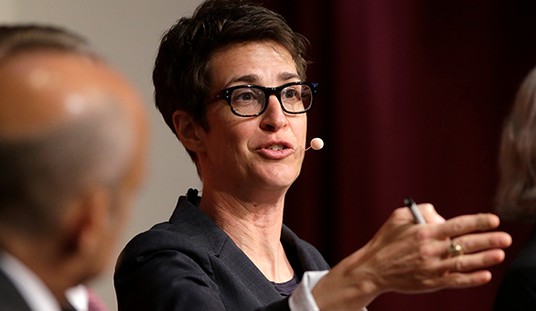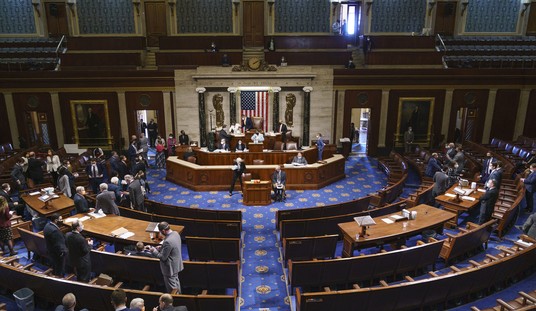In 2007 Think Progress happily announced that “a new National Intelligence Estimate (NIE) released today concludes with ‘high confidence’ that ‘in fall 2003, Tehran halted its nuclear weapons program.'” But in 2009 Barack Obama announced to the world that Iran had been secretly operating a nuclear enrichment plant. What a difference two years makes. Perhaps the better report to read from that vintage year is Anthony Cordesman‘s 2007 study for the Center for Strategic and Independent Studies examining the outcomes of a hypothetical nuclear war in the Middle East between Israel and Iran. Cordesman concluded that once a conflict got started it would tend to escalate to where both countries were destroyed. A summary of the study on the CSIS site says:
It does seem clear, however, that both sides would probably be forced to target the other’s population centers in any scenario that escalated beyond an initial demonstrative strike. It also seems likely that such a conflict would quickly become existential in the sense that both sides would seek to inflict the maximum possible casualties on its opponent, and to destroy its ability to recover as a nation.
The analysis indicates that Israeli might have the near to mid-term advantage in such a struggle, at least in terms of the ability to inflict more damage on the Persian ethnic population and economy of Iran. Iran is much larger than Israel, but its population is heavily urbanized and extremely vulnerable to boosted and thermonuclear weapons.
This advantage seems likely to continue until Iran obtained boosted or thermonuclear weapons. The outcome would be so costly to both sides, however, any such advantage would little or no practical value. It is unclear that either nation could reconstitute itself on anything like a prewar basis, if at all.
But the background material Cordesman prepared in support of the summary is worth reading in itself. It describes the apparatus of regional destruction; those expensive, sophisticated mechanisms that everybody claims are too dangerous use while pursuing their acquisition relentlessly. The truism that “no one wins a nuclear war” is belied by those arsenals in the same way that someone working on an expensive sportscar yet promises never drive it is less than credible. Who knows? On page 17 of his backgrounder, Cordesman states the chief problem which haunts those who smugly claim that no one is crazy enough to start an atomic war. “Rational actors do not fight nuclear wars, but history is not written about rational actors behaving in a rational manner.” Hitler invaded Russia and Japan bombed Pearl Harbor. Politicians do stupid things. They always have and maybe they always will. Once the assumption of rationality and perfect control is relaxed, the outcomes become far less predictable.
Essentially Cordesman’s study assumes that most of the hypothetical strikes against Israel will be concentrated on the Mediterranean coastal strip between Ashkelon and Hadera, with separate strikes on Beersheba, Nazareth and Eliat. A much larger and more powerful Israeli strike would probably come down on more than a dozen Iranian cities, including the perfect target that is Teheran, whose surrounding mountains will focus and intensify a thermonuclear blast like a lens. That a lot of people will die on both sides is a given.
What is less certain is whether the land will die too. Cordesman examines the relative effects of air versus ground bursts. While airbursts may kill more people in the short run “the closer to ground a bomb is detonated, the more dust and debris is thrown into the air, and the more local fallout.” These have more lasting effects. If one wanted to prevent the re-emergence of a country after a generation, poisoning the land would be one way to do it.
What is also unclear is whether nukes will be the only weapons used in an apocalyptic exchange. Cordesman examines the contribution of chemical and biological weapons to the attack mix because once an existential atomic war is underway, there is little obvious incentive for further restraint. Moreover, chemical and biological weapons would be devastatingly effective against populations stunned by nuclear blasts, whose medical response system was destroyed and whose water and sanitation facilities would be in shambles. Proxy terrorist organizations might have a specialized role in disseminating chemical and biological agents among the survivors especially if the police forces and border controls are in a state of collapse. A Middle East of half-destroyed nations would be a terrorist organization’s paradise.
Finally, Cordesman does not rule out the possibility that a war of mass destruction could spread beyond a hypothetical conflict between Iran and Israel. He presents colorful charts of the destructive extent of a nuclear hit on Riyadh, Cairo and Damascus. Since cities in Turkey, Russia and South Asia are in range of much of the weaponry there is no reason it might not apply to them. They can be hit if they are fired upon.
The 2007 survey also provides a fascinating glimpse into the new and improved ranges of biological weaponry that are coming into existence. If a nuclear exchange took place, even a limited one, it might unleash lasting hatreds of such intensity that the survivors, rather than being shocked into peace may, driven by the desire for revenge, simply proceed to finish the job. It is often assumed that a nuclear war would be mankind’s final conflict. Whoever believes that has a high opinion of mankind. Certainly the newer biological weapons seem especially well suited for the task of genocide.
- Binary biological weaponsthat use two safe to handle elements that can be assembled before use.
- Designer genes and life forms, which could include synthetic genes and gene networks, syntheticviruses, and synthetic organisms. These weapons include DNA shuffling, synthetic forms of the flu –which killed more people in 1918 than died in all of World War I and which still kills about 30,000 Americans a year –and synthetic microorganisms.
- “Gene therapy” weaponsthat use transforming viruses or similar DNA vectors carrying Trojan horse genes (retrovirus, adenovirus, poxvirus, HSV-1). Such weapons can produce single individual (somatic cell) or inheritable (germline) changes. It can also remove immunities and wound healing capabilities.
- Stealth viruses that can be introduced over years and then used to blackmail a population.
- Host-swapping diseases which act like customized versions of AIDS. Tailoring the disruption for attack purposes can produce weapons that are extremely lethal and for which there is no treatment. A tailored disease like AIDS could combine serious initial lethality with crippling long-term effects lasting decades.
- Designer diseases which instruct cells to commit suicide.
One of the key variables to preventing nuclear war is the regional perception of America. The key perception is not measured in terms of Barack Obama’s personal popularity or charisma but in the harder currency exemplified by extended deterrence (page 12). Extended deterrence is the perceived willingness of the United States to launch an nuclear response in retaliation for a nuclear attack on an ally. An ally’s willingness to leave things to the United States is akin to the concept extended deterrence and an important factor in letting the US manage a crisis, akin to a citizen’s willingness to let the police act instead of engaging in private retribution. This is a critical psychological edge which America must not completely lose if it is to retain any hope of controlling events. While the existing Israeli nuclear arsenal shows the Israelis have long been unwilling to completely consign their fate to Washington, some residual credibility of America as a regional cop is critical towards letting the hegemon sort things out instead of watching helplessly while things escalate under frantic national leaders.
Cordesman’s extended briefing provides an extended framework for examining whether this administration’s policy is making things better or worse. It lets the reader judge the following questions in the right perspective. Will America’s actions tend to stop the emergence of a nuclear Iran. If a nuclear armed Iran impends or eventuates, is America likely to prevent other powers in the region from following suit? Will current policies lessen or increase the Israeli incentive to build more and deadlier weapons? Will tensions in the area increase or decrease as a result of administration initiatives? Will America’s ability to “act the cop” increase or decrease? Will that enhance or reduce its ability to manage a crisis should one occur?










Join the conversation as a VIP Member